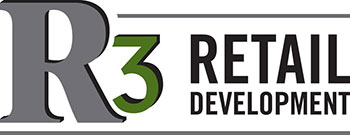Wouldn’t it be nice to have a crystal ball that could tell you when equipment needs to be serviced, when equipment is nearing the end of its useful life or tells you what really goes on at your store, office, warehouse, etc. when you aren’t there?
Building Controls provide you with valuable visibility to what goes on in your facility over time so that you are empowered to develop and implement cost savings strategies that may otherwise be missed. You might be surprised to learn how your employees’ actions and inactions directly impact your bottom line. And wouldn’t it be nice to know about potential equipment failures before the loss of product?
Reduction in energy spend is the number one consideration when people think of building control systems. Energy management and conservation strategies achieved through the installation of building controls typically results in 29 to 40% savings on annual utility costs. That savings is great for your company, the environment, and is simply the corporate, socially responsible thing to do. But, what else can building controls do for you?
Building Control Systems provide key insights into employee behavior and equipment functionality. It’s like having a crystal ball to see all the things that otherwise go sight unseen. For example, you own a convenience store and have one refrigerated case that never seems to be at the proper set point, yet your service provider has been out and checked the system repeatedly and found no mechanical issues. Is this situation one where the car doesn’t make the “clunk” when you take it in for repair?
A building control system might identify that the case in question is unable to reach the setpoint because the door is propped open for hours for stocking. Maybe the employee stocks and runs the register, and he or she props open the door for stocking and leaves it open to go up front to help a customer.
Maybe you have customers complaining that product is not lasting or remaining fresh as long after purchase. You check the case and find that it appears to be functioning properly and the temperature is good. So, what is causing this issue? With a building control system, you might find that the case gets up to 80 degrees at night during defrost and is taking a couple of hours to return to normal temperature. With this information, you are empowered to direct your service tech on what to look for and repair. No more customer complaints about freshness.
Perhaps you are noticing a surge in your heating and cooling bills. The building control system may show you that one employee turns the heat set point up every morning at the beginning of their shift, and another employee turns it down every afternoon at the beginning of their shift. The system might be struggling with the extreme fluctuations in set points. Building Controls eliminate that variable by allowing you to choose what temperature you want to maintain during specific hours.
You probably have a standard process for closing the store each evening. Employees turn off certain equipment and lights. Or maybe you utilize time clocks to control when lighting goes on and off. Time clocks break, and employees forget, so how do you know if your lights remain on overnight or if they are really going on and off at the right time? A building control system allows you to see if the lights are on or off and to set the time to turn on or off specific lights. Building controls provide visibility into your lighting energy usage and provide the flexibility to change lighting schedules without needing a service tech to make a change to the time clock.
